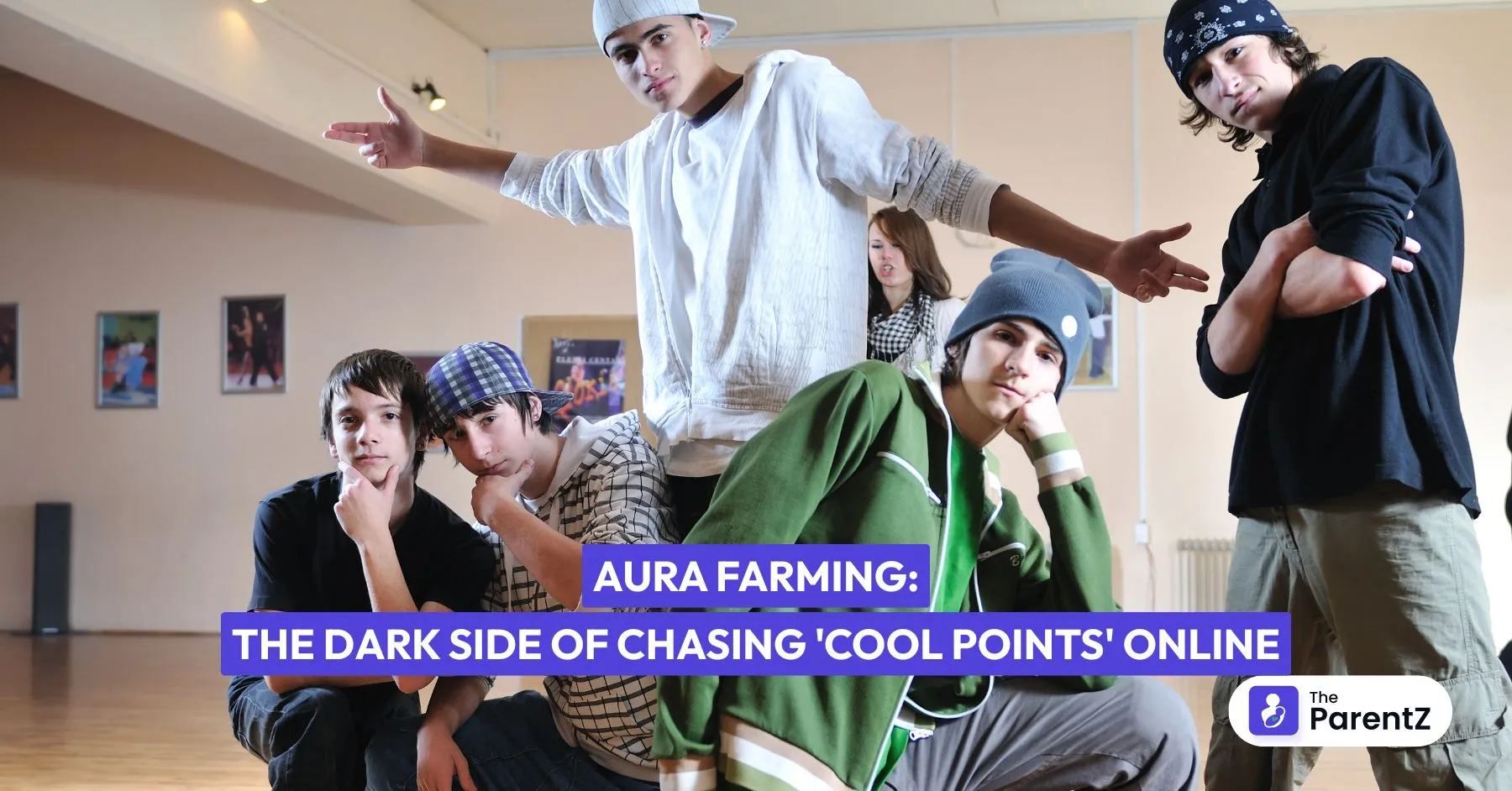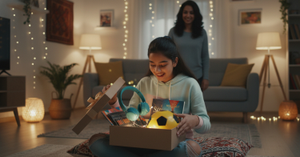If you’ve heard your kid talk about “aura points” or watched a TikTok where someone flips their hair, walks in slow-mo, or does something ridiculously stylish just for the camera, you’ve likely witnessed aura farming in action. It’s a term that’s all over Gen Z and Gen Alpha spaces right now; part gaming, part anime, part social media performance art. But while it may seem like harmless fun or just another trend teens are obsessed with, there’s a deeper side to this that’s worth unpacking.
Let’s start with what aura farming actually is. In video games, “farming” means grinding, like doing repetitive tasks to collect something, like experience points or in-game items. Now bring that concept into the real world, but replace in-game rewards with a social currency: aura. Aura is basically the vibe of looking effortlessly cool, mysterious, strong, or aesthetic, a kind of “main character energy.” If you’re aura farming, you’re doing things specifically to build that vibe and rack up invisible cool points, whether that’s how you dress, how you act, or how you perform for your phone camera.
The Rise of Aura Farming
TikTok is the heart of this trend. Short videos of teens dressing like anime protagonists, walking like they’re in a cinematic slow-mo sequence, or filming themselves doing smooth skate tricks at sunset with the perfect lo-fi soundtrack, all of these are classic aura farming moments.
There’s also a strong gaming influence. In games like Elden Ring, Valorant, or GTA RP, players perform flashy moves not just to win, but to look amazing while doing it. And naturally, this bleeds into real life. It’s no longer enough just to be good at something; it has to look good, be filmed, and then shared for validation.
Aura farming has become a way to stand out in a crowded digital space. But here’s the thing: it’s exhausting. And for some kids, it’s getting dark.
The Pressure to Perform Coolness
Teens have always wanted to be cool. But aura farming has pushed that desire into a kind of full-time job. What used to be casual (dressing cool or doing something funny) now has to be curated, edited, filtered and optimized for likes, views and comments. It’s not just about being cool anymore. It’s about showing that you’re cool. Constantly.
That’s a lot of pressure for a 13 or 15-year-old.
Some teens are now spending hours trying to capture the perfect “aura” moment. Filming and re-filming, stressing about lighting and angles, planning outfits around what will look best on camera. They’re learning to be directors, editors, stylists and marketers of their own personas. And when those videos don’t land? When no one likes, comments, or shares, that often hits hard.
Kids are tying their self-worth to their digital vibe. The failure to “aura farm” successfully leads to anxiety, insecurity and even depression.
The Shift From Fun to Fake
Another issue is how fake it can all become. What starts off as self-expression quickly morphs into performance. Teens start copying each other’s aesthetics, mannerisms, and behaviors, not because they actually enjoy them, but because those are the trends that score aura points. This leads to a weird kind of sameness, where individuality takes a back seat to clout.
Some teens even take it a step further and fake entire lifestyles. They pretend to be rich, famous, edgy, or deep just to build an aura. There are videos of kids walking past polling booths pretending to be celebrities signing autographs. Others stage “candid” moments that are clearly rehearsed. It’s all for the vibe.
This constant need to perform can warp a kid’s sense of reality. They stop asking, Do I like this? and start asking, Will people think this is cool?
The Inevitable Cringe
The thing about aura farming is that it walks a fine line between cool and cringe. Trying too hard is a surefire way to get clowned online. Gen Z and Gen Alpha are ruthless when it comes to spotting desperation.
This is where it gets especially tricky for younger teens. They’re still figuring out who they are. And when they try to join in on a trend without fully understanding the tone, they can become targets for mockery. One wrong move, one awkward post and the comment section can turn brutal. Cancel culture meeting middle school insecurity is not a great mix.
How Some Teens Twist the Trend
Some teens have even started using aura farming as a tool for manipulation. It becomes less about self-expression and more about social control. There are kids who use their “aura” to dominate friend groups, gain popularity at school, or even humiliate others who don’t measure up. In extreme cases, it leads to toxic behavior like bullying masked as “vibe-checking” or gatekeeping what kind of aura is acceptable.
There’s also the issue of over-sexualization. Some teens feel pressure to post in a way that’s flirty or suggestive because that type of content gets more engagement. Aura farming, in that context, becomes a dangerous game of seeking validation in inappropriate ways, often without fully understanding the consequences.
What Parents Should Know
First, don’t panic. Aura farming isn’t inherently evil. For some kids, it’s just harmless fun or a creative outlet. But like anything on the internet, it can go too far.
Here’s what you can do:
- Talk to your kids: Ask them what they’re watching, who they follow, and what they post. Don’t judge, just listen. Knowing the culture they’re in helps you understand their world.
- Help them separate real self-worth from digital approval: Remind them that likes and views aren’t the same as being liked or valued.
- Watch for signs of stress, anxiety, or obsession: If they’re filming videos for hours, constantly checking their phone, or seem upset when a post doesn’t perform well, it might be time to step in.
- Encourage offline hobbies: Having something they do just for themselves with no camera involved can be grounding.
- Teach digital literacy: Help them understand what’s real and what’s curated. Talk about why someone might fake a lifestyle online and why chasing that doesn’t lead to happiness.
Conclusion
Aura farming is one of the many ways young people today are navigating identity in a hyper-online world. It’s creative, sometimes funny, and very much a sign of the times. But it also reveals how deeply the need to be seen, admired, and validated has embedded itself into teen life.
Cool isn’t just about being yourself anymore. It’s about crafting a self that others will like. That’s not always healthy and it’s definitely not always real.
So, if your teen is out there aura farming, keep the conversation going. Help them see that their real “aura” doesn’t need a filter.








Be the first one to comment on this story.